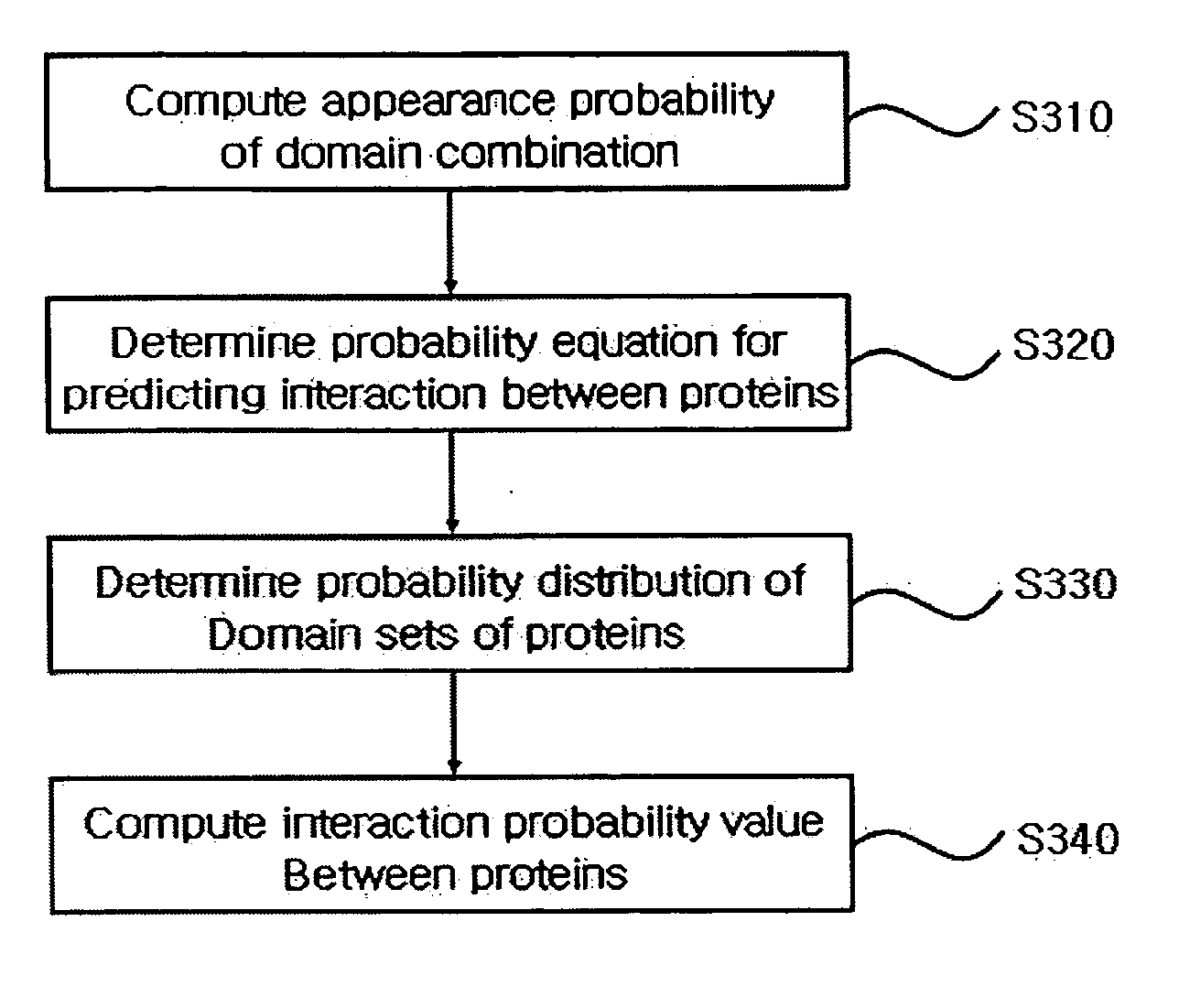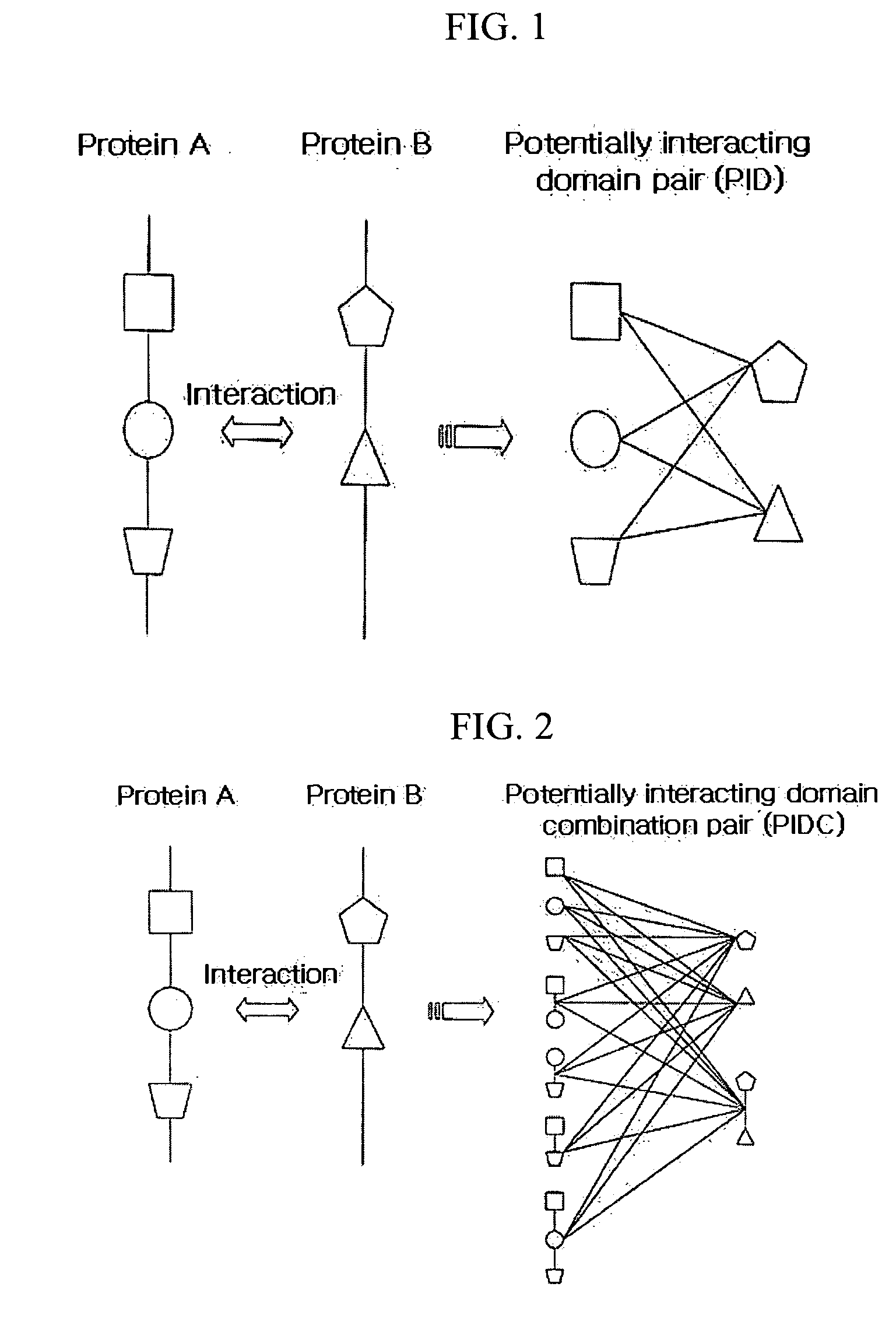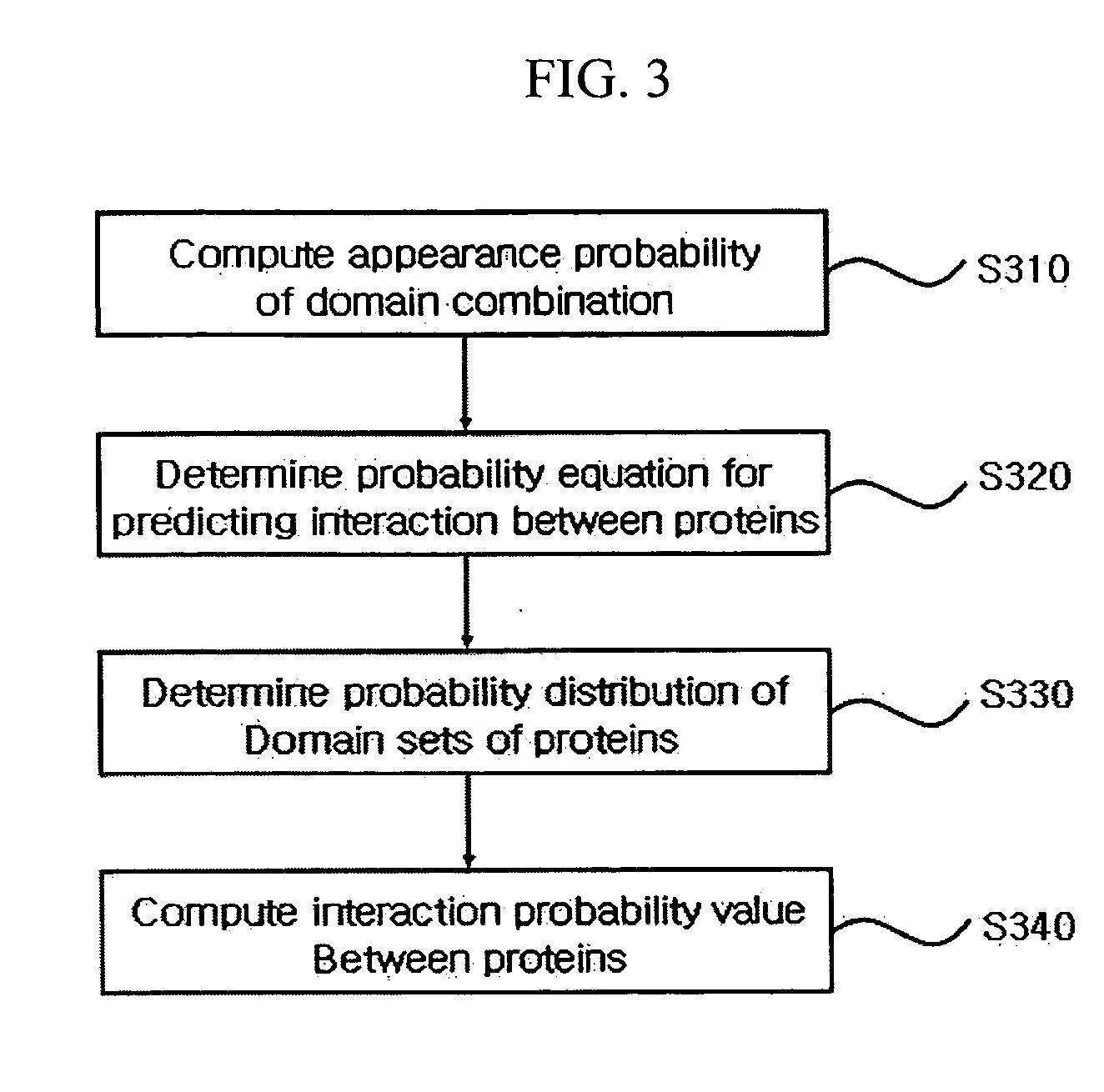System and method for predicting the interaction between proteins based on domain combination
a domain combination and protein technology, applied in the field of system and method for predicting the interaction probability between proteins based on domain combination pairs, can solve the problems of conventional domain based prediction methods, the reliability of prediction is reduced, and the domain based protein-protein interaction prediction is not vigorously developed, so as to achieve short time, improve accuracy, and reduce costs
- Summary
- Abstract
- Description
- Claims
- Application Information
AI Technical Summary
Benefits of technology
Problems solved by technology
Method used
Image
Examples
Embodiment Construction
Now, preferred embodiments of the present invention, i.e., a system and a method for predicting the interaction between proteins base on domain combination, will be described in detail with reference to the annexed drawings.
FIG. 1 is a schematic view of a conventional approach to predict the interaction between proteins based on domain pairs. As shown in FIG. 1, the conventional approach is based on the assumption that the protein-protein interactions depend on single domain pairs. FIG. 1 illustrates potentially interacting domain (PID) pair when two proteins with 3 and 2 single domains interact with each other.
Prior to the description of a prediction model proposed by the present invention, the notion of domain combination and domain combination pair will be described. Hereinafter, for convenience of the description, the domain combination and the domain combination pair are respectively denoted by dc and dc-pair in short form.
In case that a protein p contains multiple domain...
PUM
 Login to View More
Login to View More Abstract
Description
Claims
Application Information
 Login to View More
Login to View More - R&D
- Intellectual Property
- Life Sciences
- Materials
- Tech Scout
- Unparalleled Data Quality
- Higher Quality Content
- 60% Fewer Hallucinations
Browse by: Latest US Patents, China's latest patents, Technical Efficacy Thesaurus, Application Domain, Technology Topic, Popular Technical Reports.
© 2025 PatSnap. All rights reserved.Legal|Privacy policy|Modern Slavery Act Transparency Statement|Sitemap|About US| Contact US: help@patsnap.com



